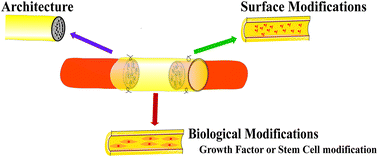Biomimetic neural scaffolds: a crucial step towards optimal peripheral nerve regeneration
Abstract
Peripheral nerve injury is a common disease that affects more than 20 million people in the United States alone and remains a major burden to society. The current gold standard treatment for critical-sized nerve defects is autologous nerve graft transplantation; however, this method is limited in many ways and does not always lead to satisfactory outcomes. The limitations of autografts have prompted investigations into artificial neural scaffolds as replacements, and some neural scaffold devices have progressed to widespread clinical use; scaffold technology overall has yet to be shown to be consistently on a par with or superior to autografts. Recent advances in biomimetic scaffold technologies have opened up many new and exciting opportunities, and novel improvements in material, fabrication technique, scaffold architecture, and lumen surface modifications that better reflect biological anatomy and physiology have independently been shown to benefit overall nerve regeneration. Furthermore, biomimetic features of neural scaffolds have also been shown to work synergistically with other nerve regeneration therapy strategies such as growth factor supplementation, stem cell transplantation, and cell surface glycoengineering. This review summarizes the current state of neural scaffolds, highlights major advances in biomimetic technologies, and discusses future opportunities in the field of peripheral nerve regeneration.



 Please wait while we load your content...
Please wait while we load your content...